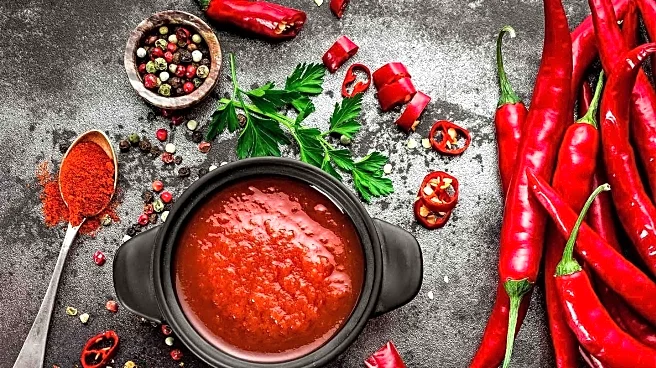What's Happening?
The trend of super spicy foods is gaining momentum, driven by social media challenges and consumer interest in bold flavors. Brands are innovating by infusing traditional products with intense heat, such as hot peanut butter, chili-laced chocolate, and scorching gummy bears. This movement is not only expanding the culinary landscape but also introducing unexpected spicy variations to familiar foods. The popularity of spicy pastes and sauces, like Japanese wasabi and North African harissa, has been longstanding, but the current trend is pushing boundaries further. While these innovations are exciting, they also come with health risks, as extremely spicy foods can pose challenges to consumers' well-being.
Why It's Important?
The super spicy food trend reflects broader consumer preferences for adventurous and intense flavors, impacting food industry strategies and product development. As brands capitalize on this trend, they are likely to see increased engagement from consumers seeking novel culinary experiences. However, the health implications of consuming extremely spicy foods could lead to increased scrutiny and potential regulatory considerations. The trend also highlights the influence of social media in shaping consumer behavior and driving market demand for unique food products.
What's Next?
As the trend continues, food brands may explore further innovations in spicy products, potentially expanding into new categories or developing milder versions to cater to a wider audience. Consumer feedback and health considerations will likely influence future product offerings. Additionally, regulatory bodies may assess the health risks associated with super spicy foods, potentially leading to guidelines or warnings for consumers. The ongoing popularity of spicy food challenges on social media will continue to drive interest and experimentation in this area.
Beyond the Headlines
The rise of super spicy foods may also influence cultural perceptions of traditional cuisines, as global flavors become more integrated into mainstream food products. This trend could lead to increased appreciation for diverse culinary traditions and encourage cross-cultural culinary exchanges. Furthermore, the emphasis on bold flavors may inspire chefs and food creators to experiment with new combinations, potentially leading to innovative dishes and dining experiences.











